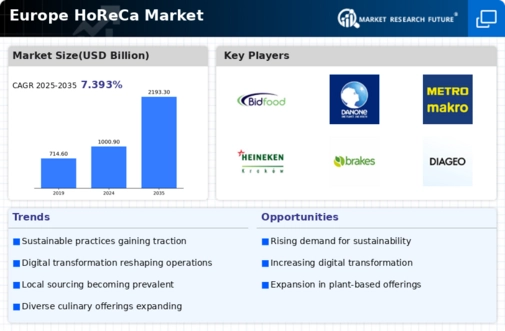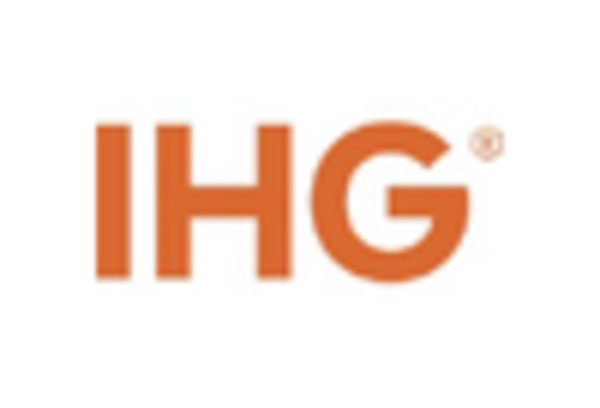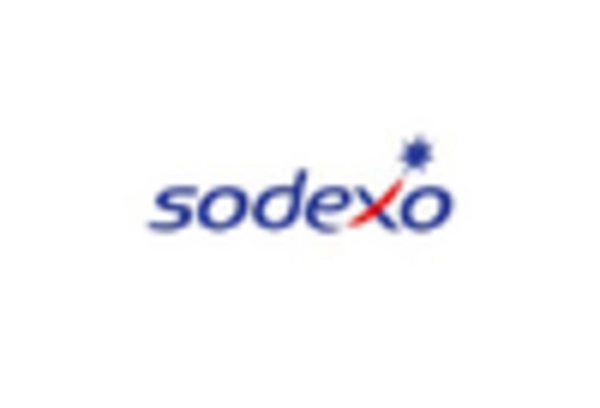Health and Wellness Trends
The increasing focus on health and wellness is significantly impacting the horeca market in Europe. Consumers are becoming more health-conscious, leading to a surge in demand for healthier menu options. Recent surveys indicate that nearly 60% of diners are actively seeking out restaurants that offer nutritious meals and transparent ingredient sourcing. This trend is prompting horeca establishments to revise their menus, incorporating organic, locally sourced, and low-calorie options. Furthermore, the rise of dietary restrictions, such as gluten-free and vegan diets, is compelling businesses to diversify their offerings to cater to a broader audience. As health and wellness continue to be prioritized by consumers, horeca operators must adapt to these preferences to remain competitive in the market.
Technological Advancements
Technological advancements are playing a pivotal role in shaping the horeca market in Europe. The integration of advanced point-of-sale systems, mobile ordering applications, and contactless payment solutions has transformed the way consumers interact with horeca establishments. Recent data indicates that approximately 40% of consumers prefer using mobile apps for ordering food and making reservations. This shift towards technology not only enhances customer convenience but also streamlines operations for businesses, allowing for improved efficiency and reduced wait times. Additionally, the use of data analytics enables horeca operators to better understand consumer behavior, leading to more targeted marketing strategies. As technology continues to evolve, it is likely that the horeca market will see further innovations that enhance the overall dining experience and operational effectiveness.
Economic Recovery and Growth
The horeca market in Europe is currently benefiting from a phase of economic recovery and growth. As disposable incomes rise, consumers are increasingly willing to spend on dining out and leisure activities. Recent economic reports suggest that consumer spending in the horeca sector has increased by approximately 15% over the past year. This growth is encouraging horeca businesses to expand their operations and invest in enhancing customer experiences. Additionally, the influx of tourism in various European cities is further bolstering the market, as travelers seek local dining experiences. However, businesses must remain vigilant to economic fluctuations that could impact consumer spending habits. Overall, the positive economic climate presents opportunities for growth and innovation within the horeca market.
Evolving Consumer Preferences
The horeca market in Europe is currently experiencing a shift in consumer preferences, with a growing inclination towards diverse culinary experiences. This trend is reflected in the increasing demand for ethnic cuisines and plant-based options, which have seen a rise of approximately 30% in popularity over the past few years. Consumers are increasingly seeking unique dining experiences that go beyond traditional offerings, prompting establishments to innovate their menus. This evolution in taste is influencing the horeca market, as businesses adapt to meet the changing desires of their clientele. Furthermore, the rise of food delivery services has also contributed to this shift, as consumers seek convenience without compromising on quality. As a result, horeca businesses are compelled to enhance their offerings to attract and retain customers, thereby driving growth in the industry.
Regulatory Changes and Compliance
Regulatory changes and compliance requirements are increasingly influencing the horeca market in Europe. Stricter food safety regulations and health standards necessitate that horeca establishments invest in training and infrastructure to ensure compliance. Recent legislative updates have introduced new guidelines regarding food labeling and allergen information, which businesses must adhere to in order to avoid penalties. This regulatory landscape can pose challenges, particularly for smaller establishments that may lack the resources to implement necessary changes. However, compliance can also serve as a competitive advantage, as consumers are becoming more aware of food safety and quality standards. As such, horeca businesses that prioritize compliance may enhance their reputation and attract a more discerning clientele.

















Leave a Comment